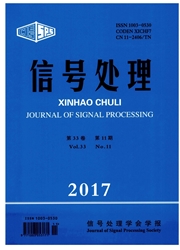

 中文摘要:
中文摘要:
干涉SAR的相干性对于数据质量的衡量和与后向散射结合的目标信息提取,都具有重要的意义。然而相比其他的去相干源,土壤湿度变化引起的重轨干涉SAR的去相干尚未得到充分的研究。该文利用Envisat ASAR和暗室数据分析了由土壤湿度变化引起的重轨干涉SAR的相干性损失。C波段ASAR数据仅在裸土或草地区域具有较高的相干性,意味着这两种陆地覆盖类型比较适合作为土壤湿度变化对星载数据干涉相干性影响的研究对象。此外重访周期短的星载SAR即使对于农田区域具有重要的应用潜力。由于微波暗室的可控环境,特别是能够去除其他去相干源的影响,因而设计开展了暗室实验,并详细分析了土壤样本的观测数据。实验发现低频2–2.5 GHz具有较高的相干性,并且对土壤湿度初值的敏感度较低。这表示在利用干涉相干性信息提取土壤湿度变化时,至少是在相干性水平和对土壤湿度初值的敏感度方面,S波段优于C波段。
 英文摘要:
英文摘要:
Interferometric Synthetic Aperture Radar(In SAR) coherence is important not only in determining measurement quality but also for extracting thematic information about objects on the ground in combination with backscattering coefficient. The decorrelation of repeat-pass In SAR caused by soil moisture change has received little attention in comparison with other sources of decorrelation. In this paper, we use ENVISAT ASAR data and laboratory experiments to analyze the repeat-pass In SAR coherence loss results due to soil moisture change. C-band ASAR data has high coherence over bare soil and grassland areas, which indicates that these two types of land cover are good choices for the analysis of In SAR coherence loss due to soil moisture change. In addition, spaceborne SAR with short revisit capability, has great potential for this specific application, even for agricultural fields. We conducted further analysis of the soil-sample laboratory data acquired in an anechoic chamber because of its controllable environment and the ability to exclude other sources of decorrelation. We found that the lower frequency range, 2–2.5 GHz, has the highest coherence and is the most insensitive to the initial soil moisture value. This indicates that the S band is more advantageous than the C band when using In SAR coherence to detect soil moisture change. This is true at least with respect to the S band's high coherence level and insensitivity to initial soil moisture values.
 同期刊论文项目
同期刊论文项目
 同项目期刊论文
同项目期刊论文
 期刊信息
期刊信息
